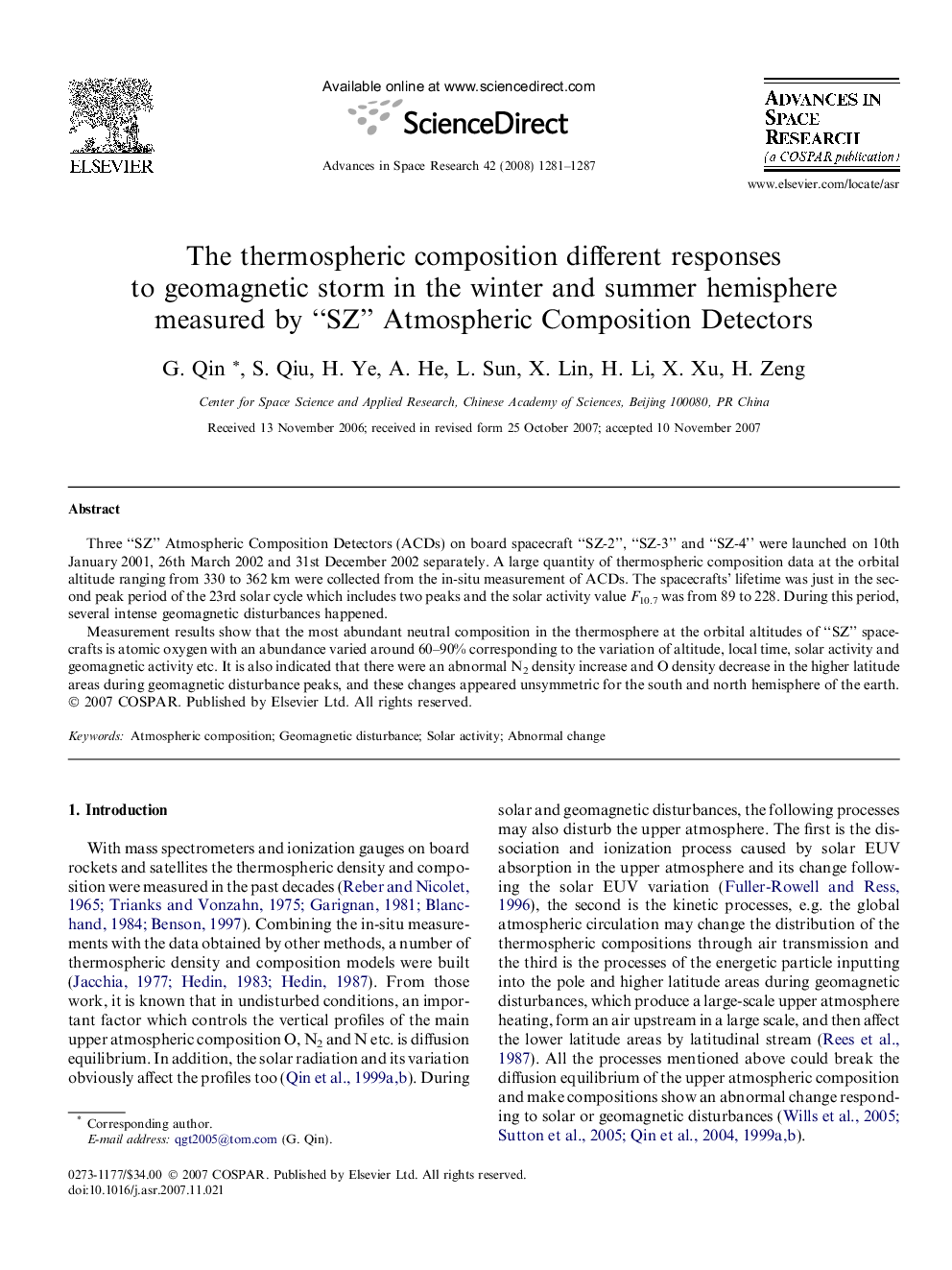| Article ID | Journal | Published Year | Pages | File Type |
|---|---|---|---|---|
| 1766618 | Advances in Space Research | 2008 | 7 Pages |
Three “SZ” Atmospheric Composition Detectors (ACDs) on board spacecraft “SZ-2”, “SZ-3” and “SZ-4” were launched on 10th January 2001, 26th March 2002 and 31st December 2002 separately. A large quantity of thermospheric composition data at the orbital altitude ranging from 330 to 362 km were collected from the in-situ measurement of ACDs. The spacecrafts’ lifetime was just in the second peak period of the 23rd solar cycle which includes two peaks and the solar activity value F10.7 was from 89 to 228. During this period, several intense geomagnetic disturbances happened.Measurement results show that the most abundant neutral composition in the thermosphere at the orbital altitudes of “SZ” spacecrafts is atomic oxygen with an abundance varied around 60–90% corresponding to the variation of altitude, local time, solar activity and geomagnetic activity etc. It is also indicated that there were an abnormal N2 density increase and O density decrease in the higher latitude areas during geomagnetic disturbance peaks, and these changes appeared unsymmetric for the south and north hemisphere of the earth.
